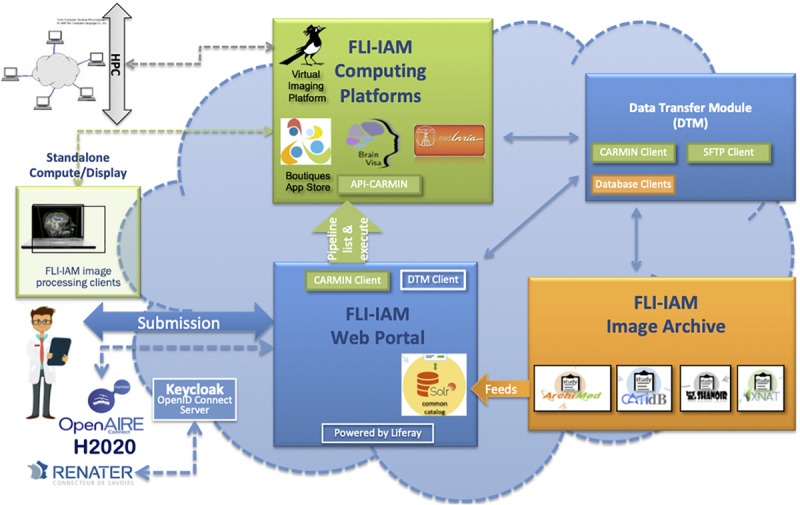FIGURE 1.

The FLI-IAM architecture. Three major blocks compose the core of this distributed web architecture: the web portal (in blue), the image archive (in orange) and the computing platforms (in green). The data transfer module (in blue) ensures data exchange between these three modules. The API-CARMIN allows the seamless connection of data and pipelines. The user submits a query via the web portal (e.g., selecting images following criteria and choosing the execution of an imaging processing pipeline). The user’s identification can be done via a Renater account or realized via OpenID connect implemented using Keycloak. Presently, four databases and four computing platforms are federated by the infrastructure. The integration of a new database is realized by the introduction of a connector that maps its data model to the common catalog. Each database manages autonomously multicenter imaging studies. Several instances of each database can be managed be the infrastructure. Pipelines can be executed on high performance computing cluster (HPC) or on a local machine. This DTM module ensures the transfer of data between a database (dedicated clients in orange) and the corresponding computing resource via the API-CARMIN. A local file system and database are used for a temporarily storage. Each platform (database or computing resource) can be configured with its web address and each transfer can be started and monitored. For each transfer between two platforms, a communication channel (protocol) can be chosen. A scheduler assures long-time data transfers. The architecture is part of the H2020 European OpenAire project for open science promotion.
